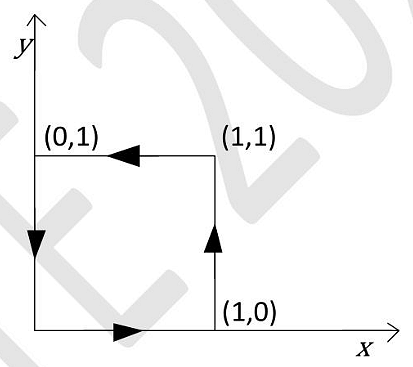If A and B are the two sets containing 3 and 6 elements respectively, then what can be the maximum number of elements in A∪B?
- 9
- 10
- 11
- 12
The Correct Option is A
Solution and Explanation
Let A and B be two sets with |A| = 3 and |B| = 6.
The number of elements in the union of A and B is given by the principle of inclusion-exclusion: |A U B| = |A| + |B| - |A ∩ B|.
The maximum number of elements in A U B occurs when the intersection of A and B is minimal.
Case 1: A and B are disjoint sets, i.e., A ∩ B = ∅. In this case, |A ∩ B| = 0. |A U B| = |A| + |B| = 3 + 6 = 9
Case 2: A is a subset of B, i.e., A ⊆ B. In this case, A ∩ B = A, so |A ∩ B| = |A| = 3. |A U B| = |A| + |B| - |A ∩ B| = 3 + 6 - 3 = 6
Case 3: A and B have some elements in common. Let |A ∩ B| = k.
Since A ∩ B ⊆ A, we have 0 ≤ k ≤ |A| = 3. Since A ∩ B ⊆ B, we have 0 ≤ k ≤ |B| = 6. Thus, 0 ≤ k ≤ 3. |A U B| = |A| + |B| - |A ∩ B| = 3 + 6 - k = 9 - k.
To maximize |A U B|, we need to minimize k.
The minimum value of k is 0. |A U B| = 9 - 0 = 9.
Therefore, the maximum number of elements in A U B is 9.
Top Questions on Sets
- Mode of the data \( 19, 2, 6, 12, 12, 3, 5, 6, 18, 14, 6, 17, 2 \) is:
- The mean and mode of 5, 3, 9, 1, 9, 8, 9, 4 are m and n respectively, the value of m+n is?
- If A = {1, 2, {3, 4}, 5}, then which of the following is incorrect?
- For \(\vec{F}=(x+y)\hat{i}+(x+y)\hat{j}\) the value of \(\oint\vec{F}.d\vec{r}\) along the path shown in the figure is ________. Give your answer as an integer.

- Let $S_1 = {(x, y) ∈ R^2 ∶ x + y ≥ 1, x + y ≤ 2, y ≥ x^2, x, y ≥ 0}$ and $S_2 = {(x, y) ∈ R^2 ∶ x + y ≥ 1, x + y ≤ 2, y ≤ x^2, x, y ≥ 0}.$ Then, which of the following is CORRECT ?
Questions Asked in AP POLYCET exam
- The solution of \( x - 2y = 0 \) and \( 3x + 4y - 20 = 0 \) is:
- AP POLYCET - 2025
- Linear Equations
- A prime number \( p \) divides \( a^2 \) where \( a \) is a positive integer, then
- AP POLYCET - 2025
- Prime and Composite Numbers
- Area of a sector of a circle with radius 4 cm and angle 30° is (use \( \pi = 3.14 \)):
- If assumed mean of a data is 47.5, \( \sum f_i d_i = 435 \) and \( \sum f_i = 30 \), then mean of that data is:
- AP POLYCET - 2025
- Arithmetic Mean
- In an electric circuit, three resistors \( 5 \, \Omega \), \( 10 \, \Omega \) and \( 15 \, \Omega \) are connected in series across a \( 60 \, V \) battery. Then the current flowing in the circuit is:
- AP POLYCET - 2025
- Series and Parallel Connection of Resistance